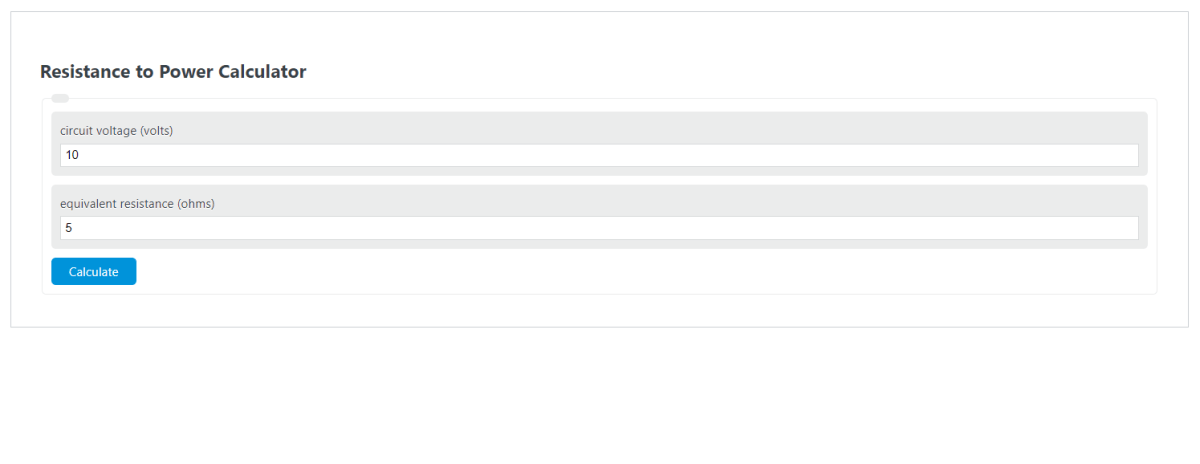Enter the circuit voltage (volts) and the equivalent resistance (ohms) into the calculator to determine the Power From Resistance.
- All Electrical Calculators
- Speed to Power Calculator
- Torque to Power Calculator
- Mechanical Power Calculator
Power From Resistance Formula
The following formula is used to calculate the Power From Resistance.
P = V^2/ Re
- Where P is the Power From Resistance (watts)
- V is the circuit voltage (volts)
- Re is the equivalent resistance (ohms)
To calculate power from resistance, square the circuit voltage, then divide by the equivalent resistance.
How to Calculate Power From Resistance?
The following two example problems outline how to calculate the Power From Resistance.
Example Problem #1:
- First, determine the circuit voltage (volts). In this example, the circuit voltage (volts) is measured to be 12.
- Next, determine the equivalent resistance (ohms). For this problem, the equivalent resistance (ohms) is calculated to be 5.
- Finally, calculate the Power From Resistance using the formula above:
P = V^2/ Re
Inserting the values from above and solving the equation with the imputed values gives:
P = 12^2/ 5 = 28.8 (watts)
FAQ
What is the significance of calculating power from resistance in electrical circuits?
Calculating power from resistance is crucial for designing and analyzing electrical circuits. It helps in determining the amount of power that a component consumes or dissipates, ensuring that the components are not overloaded and operate efficiently within their rated capacities.
Can the formula for calculating power from resistance be used for both AC and DC circuits?
The formula P = V^2/Re is primarily used for DC circuits or for the resistive part of AC circuits. For complete AC circuits, power calculations can become more complex due to the presence of reactive components (capacitors and inductors), requiring the use of RMS values and power factor considerations.
How does the equivalent resistance affect the power in a circuit?
The equivalent resistance in a circuit inversely affects the power consumed or dissipated by the circuit. A higher equivalent resistance results in lower power consumption for a given voltage, while a lower equivalent resistance leads to higher power consumption. This relationship is crucial for managing power distribution and consumption in electrical systems.
